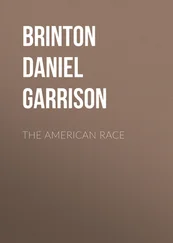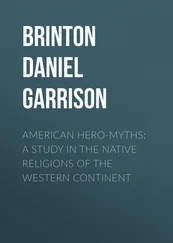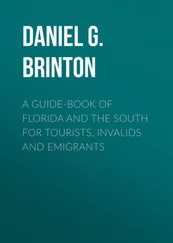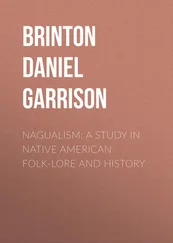Daniel Brinton - The Lenâpé and their Legends
Здесь есть возможность читать онлайн «Daniel Brinton - The Lenâpé and their Legends» — ознакомительный отрывок электронной книги совершенно бесплатно, а после прочтения отрывка купить полную версию. В некоторых случаях можно слушать аудио, скачать через торрент в формате fb2 и присутствует краткое содержание. Жанр: foreign_antique, foreign_prose, на английском языке. Описание произведения, (предисловие) а так же отзывы посетителей доступны на портале библиотеки ЛибКат.
- Название:The Lenâpé and their Legends
- Автор:
- Жанр:
- Год:неизвестен
- ISBN:нет данных
- Рейтинг книги:4 / 5. Голосов: 1
-
Избранное:Добавить в избранное
- Отзывы:
-
Ваша оценка:
- 80
- 1
- 2
- 3
- 4
- 5
The Lenâpé and their Legends: краткое содержание, описание и аннотация
Предлагаем к чтению аннотацию, описание, краткое содержание или предисловие (зависит от того, что написал сам автор книги «The Lenâpé and their Legends»). Если вы не нашли необходимую информацию о книге — напишите в комментариях, мы постараемся отыскать её.
The Lenâpé and their Legends — читать онлайн ознакомительный отрывок
Ниже представлен текст книги, разбитый по страницам. Система сохранения места последней прочитанной страницы, позволяет с удобством читать онлайн бесплатно книгу «The Lenâpé and their Legends», без необходимости каждый раз заново искать на чём Вы остановились. Поставьте закладку, и сможете в любой момент перейти на страницу, на которой закончили чтение.
Интервал:
Закладка:
That it was an Algonkin dialect, closely akin to the Nanticoke, is clear from the words and proper names preserved in the early records and locally to this day. The only word which has created doubts has been the name of "a certain imaginary spirit called Ochre ." [35] Footnote_35_35 "Omni vero ratione placare conantur phantasticum quemdam spiritum quem Ochre nominant, ut ne noceat." Relatio Itineris in Marylandiam , p. 40.
It has been supposed that this was the Huron oki . But it is pure Algonkin. It is the Cree oki-sikow ( être du ciel , ange , Lacombe), the Abnaki ooskoo ( katini ooskoo , Bon Esprit, matsini ooskoo , Mauvais Esprit, Rasles).
It was nearly allied to that spoken in Virginia among Powhatan's subjects, as an English boy who had lived with that chieftain served as an interpreter between the settlers and the Patuxent and neighboring Indians. [36] Footnote_36_36 Bozman, History of Maryland , Vol. I, p. 166
The Conoys were removed, before 1743, from Conejoholo to Conoy town, further up the Susquehanna, and in 1744 they joined several other fragmentary bands at Shamokin (where Sunbury, Pa., now stands). Later, they became merged with the Nanticokes. [37] Footnote_37_37 "The Nanticokes and Conoys are now one nation." Minutes of the Provincial Council of Penna. , 1759, Vol. VIII, p. 176.
The wanderings of the unstable and migratory Shawnees have occupied the attention of several writers, but it cannot be said that either their history or their affiliations have been satisfactorily worked out. [38] Footnote_38_38 On this tribe see "The Shawnees and Their Migrations," by Dr. D. G. Brinton, in the American Historical Magazine , 1866; M. F. Force, Some Early Notices of the Indians of Ohio , Cincinnati, 1879.
Their dialect is more akin to the Mohegan than to the Delaware, and when, in 1692, they first appeared in the area of the Eastern Algonkin Confederacy, they came as the friends and relatives of the former. [39] Footnote_39_39 See Colonial History of New York , Vol. IV. Index. Loskiel, Geschichte der Mission , etc., p. 25.
They were divided into four bands, as follows: —
1. Piqua , properly Pikoweu , "he comes from the ashes."
2. Mequachake , "a fat man filled," signifying completion or perfection. This band held the privilege of the hereditary priesthood.
3. Kiscapocoke.
4. Chilicothe. [40] Footnote_40_40 These names are as given by John Johnston, Indian agent, in 1819. Archæologia Americana , Vol. I, p. 275. Heckewelder says they had four divisions, but mentions only two, the Pecuwési and Woketamósi . (MSS. in Lib. Am. Philos. Soc.)
Of these, that which settled in Pennsylvania was the Pikoweu , who occupied and gave their name to the Pequa valley in Lancaster county. [41] Footnote_41_41 "That branch of Shawanos which had settled part in Pennsylvania and part in New England were of the tribe of Shawanos then and ever since called Pi'coweu or Pe'koweu , and after emigrating to the westward settled on and near the Scioto river, where, to this day, the extensive flats go under the name of 'Pickoway Plains.'" Heckewelder MSS. in Lib. Am. Phil. Soc.
According to ancient Mohegan tradition, the New England Pequods were members of this band. These moved eastwardly from the Hudson river, and extended their conquests over the greater part of the area of Connecticut. Dr. Trumbull, however, [42] Footnote_42_42 In a note to Roger Williams, Key into the Language of America , p. 22. The tradition referred to is mentioned in the Heckewelder MSS.
assigns a different meaning to their name, and a more appropriate one — Peguitóog , the Destroyers. Some countenance is given to the tradition by the similarity of the Shawnee to the Mohegan, standing, as it does, more closely related to it than to the Unami Delaware.
It has been argued that a band of the Shawnees lived in Southern New Jersey when that territory first came to the knowledge of the whites. On a Dutch map, drawn in 1614 or thereabouts, a tribe called Saw wanew is located on the left bank of the Delaware river, near the Bay; [43] Footnote_43_43 Printed in the Colonial History of New York , Vol. I. Compare Force, ubi suprá , pp. 16, 17.
and DeLaet speaks of the Sawanoos as living there.
I am inclined to believe that, in both these cases, the term was used by the natives around New York Bay in its simple geographical sense of "south" or "southern," and not as a tribal designation. It frequently appears with this original meaning in the Waluam Olum.
A tribe called the Sapoonees, or Saponies, is mentioned as living in Pennsylvania, attached to the Delawares, about the middle of the last century. [44] Footnote_44_44 Rev. J. Morse, Report on Indian Affairs , p. 362
They are no doubt the Saponas who once dwelt on a branch of the Great Pedee river in North Carolina, and who moved north about the year 1720. [45] Footnote_45_45 See Gallatin, Synopsis of the Indian Tribes , pp. 85, 86.
They were said to have joined the Tuscaroras, but the Pennsylvania records class them with the Delawares. Others, impressed by the similarity of Sa-po-nees to Pa-nis , have imagined they were the Pawnees, now of the west. There is not the slightest importance to be attached to this casual similarity of names.
They were called, by the Iroquois, Tadirighrones , and were distinctly identified by them with the nation known to the English as the Catawbas. [46] Footnote_46_46 See New York Colonial Documents , Vol. V, pp. 660, 673, etc.
For a long time the two nations carried on a bitter warfare.
This band of about fifty families, or one hundred men (about three hundred souls), are stated to have come from South Carolina to the Potomac late in the seventeenth century, and in 1731 were settled partly on the Susquehanna and partly on the upper Ohio or Alleghany. Their chief was named Aqueioma, or Achequeloma.
Their name appears to be a compound of assin , stone; and wikwam , house, and they were probably Algonkin neighbors of the Shawnees in their southern homes, and united with them in their northern migration. [47] Footnote_47_47 Pennsylvania Archives , Vol. I, pp. 299, 300, 302. Gov. Gordon writes to the "Chiefs of ye Shawanese and Assekelaes," under date December, 1731, "I find by our Records that about 34 Years since some Numbers of your Nation came to Sasquehannah," etc. Ibid., p. 302.
CHAPTER III
The Lenape or Delawares
Derivation of the Name Lenape. – The Three Sub-Tribes the Minsi or Wolf, the Unami or Turtle, and the Unalachtgo or Turkey Tribes – Their Totems – The New Jersey Tribes the Wapings, Sanhicans and Mantas – Political Constitution of the Lenape – Vegetable Food Resources – Domestic Architecture – Manufactures. – Paints and Dyes. – Dogs – Interments – Computation of Time – Picture Writing – Record Sticks – Moral and Mental Character – Religious Belief. – Doctrine of the Soul. – The Native Priests. – Religious Ceremonies.
The proper name of the Delaware Indians was and is Lenapé , (a as in father, é as a in mate). Dr. J. Hammond Trumbull [48] Footnote_48_48 See his remarks in the Transactions of the American Philological Association , 1872, p. 157.
is quite wide of the mark both in calling this a "misnomer," and in attributing its introduction to Mr. Heckewelder.
Интервал:
Закладка:
Похожие книги на «The Lenâpé and their Legends»
Представляем Вашему вниманию похожие книги на «The Lenâpé and their Legends» списком для выбора. Мы отобрали схожую по названию и смыслу литературу в надежде предоставить читателям больше вариантов отыскать новые, интересные, ещё непрочитанные произведения.
Обсуждение, отзывы о книге «The Lenâpé and their Legends» и просто собственные мнения читателей. Оставьте ваши комментарии, напишите, что Вы думаете о произведении, его смысле или главных героях. Укажите что конкретно понравилось, а что нет, и почему Вы так считаете.












